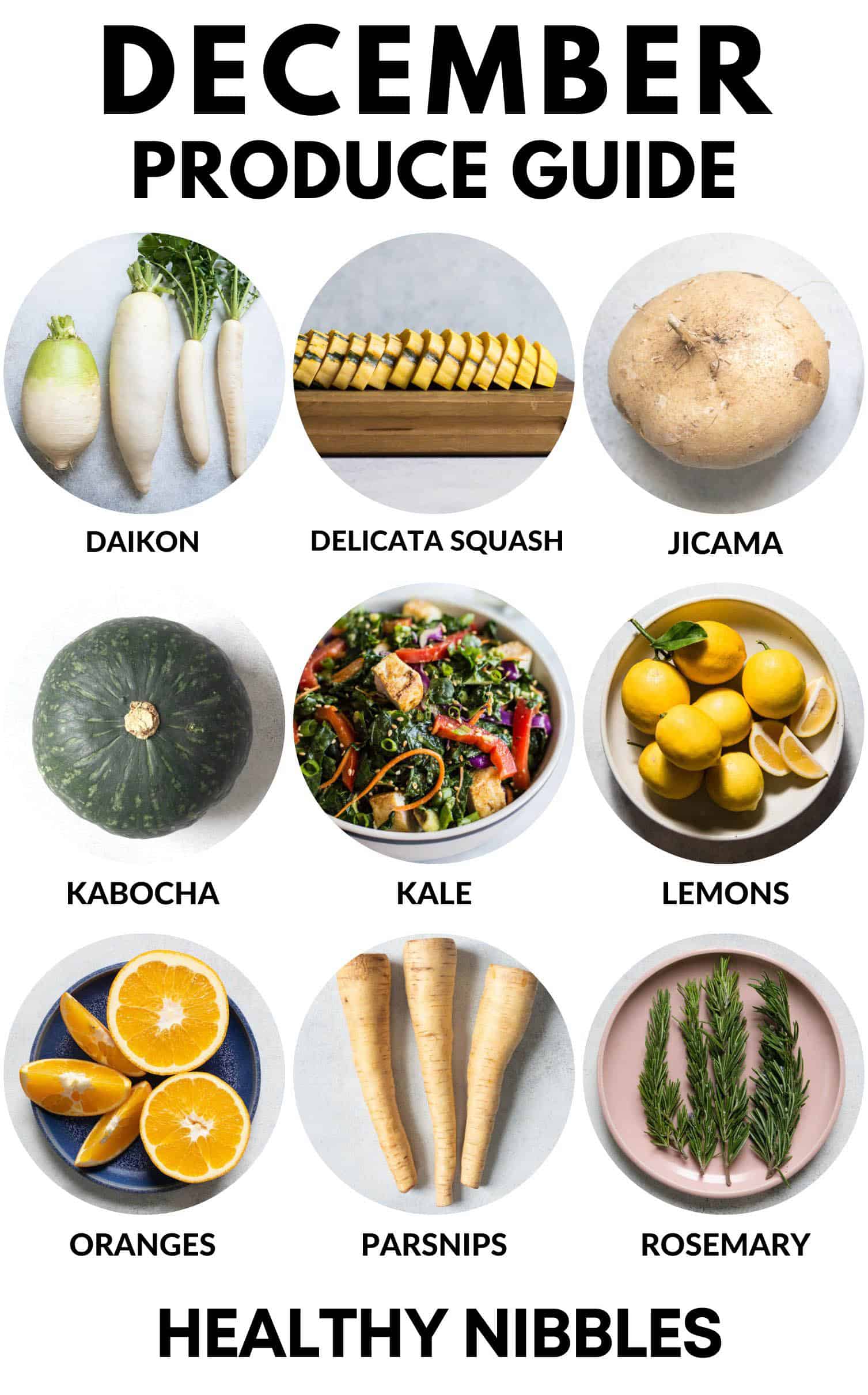
Written by Diann Leo-Omine & Lisa Lin, photos by Lisa Lin
Mornings are cool and the shortest days of the year bring darkness in the late afternoon. No wonder some animals hibernate at this time of year. To that end, I wouldn’t judge you for hiding under your covers and hitting snooze for a few extra minutes of warmth.
In Chinese culture, the winter solstice is a prominent celebration of the shortest day of the year and longer daylight hours. dongzhi (冬至) literally means “the extreme of winter” and is based on the concept of yin yang (陰陽 / 阴阳). The products of this season reflect this winter extreme. Your local farmers market is likely to be overflowing with long-lived kale and sweet parsnips, while winter citrus shines a ray of sunshine. So gather your family and loved ones and settle in with the best local produce.
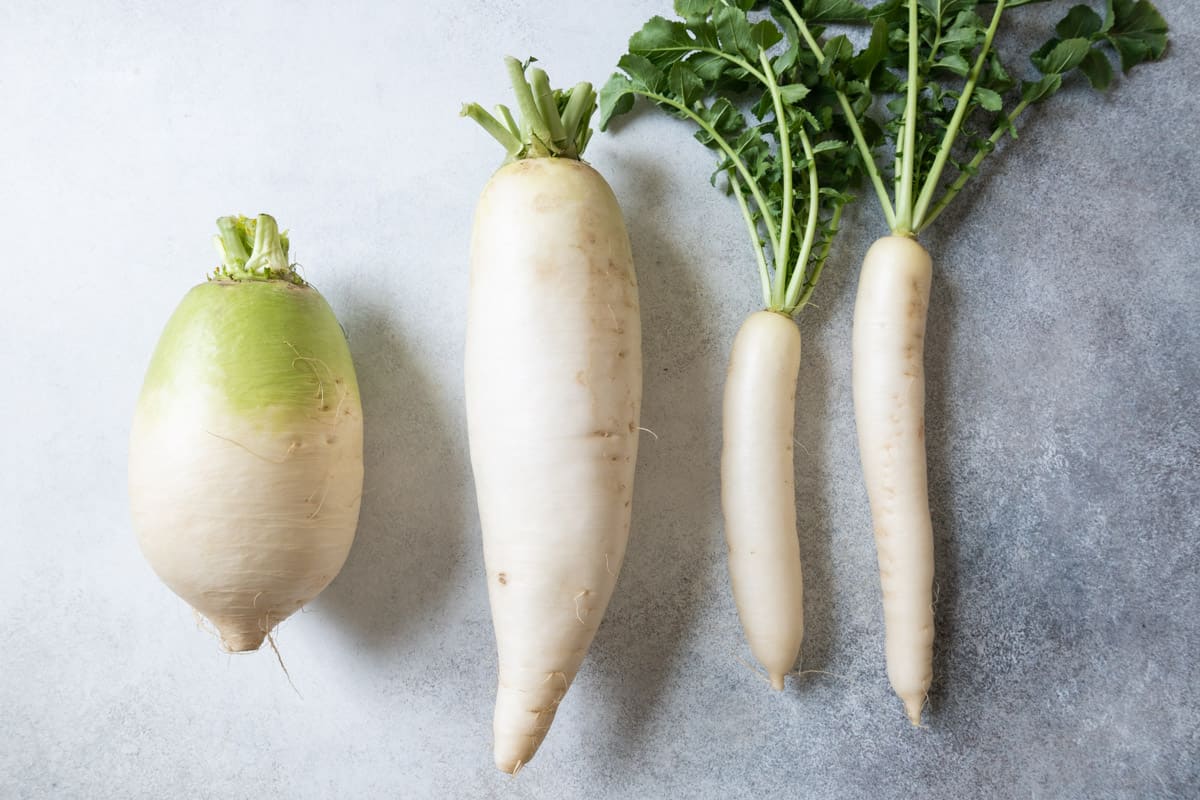
DAIKON
Daikon is a radish that often comes in white and purple varieties. Just a little bitter, peppery daikon flavors the broth in my vegan spicy tang yuan (湯圓 / 汤圆), a staple soup for dongzhi. In Chinese, daikon is known and pronounced as 蘿蔔 (traditional) 萝卜 (simplified). see back in Cantonese, luo bo in Mandarin. Interestingly, 萝卜 was translated into English as “turnip”. For this reason, the classic dim sum dish with daikon is usually referred to as “beet pie” rather than “radish pie”.
Is there a difference between the Chinese daikon and the Japanese daikon? What is the difference between Chinese daikon and Korean daikon? Mama Lin insists on cooking with the thicker, rounder Chinese daikon, claiming that the thinner, longer Japanese daikon (大根) is more bitter. The bulbous Korean radish (mu) is thicker than the Chinese radish and can usually be identified by its green color near the stem. Personally, I don’t notice much of a difference between these daikon varieties, and any of the radishes mentioned here should be fine to use.
HOW TO CHOOSE AND STORE DAIKON?
Choose firm daikon that feels heavy for its size, an indication that the daikon is nice and succulent. When the green stems are attached, they should be fresh and green. Skip any radish with dark spots or yellowed leaves. Daikon can be stored in the refrigerator for 1 to 2 weeks. You can also watch a video of Mama Lin showing everyone how to pick daikon.
RECIPES WITH DAIKON
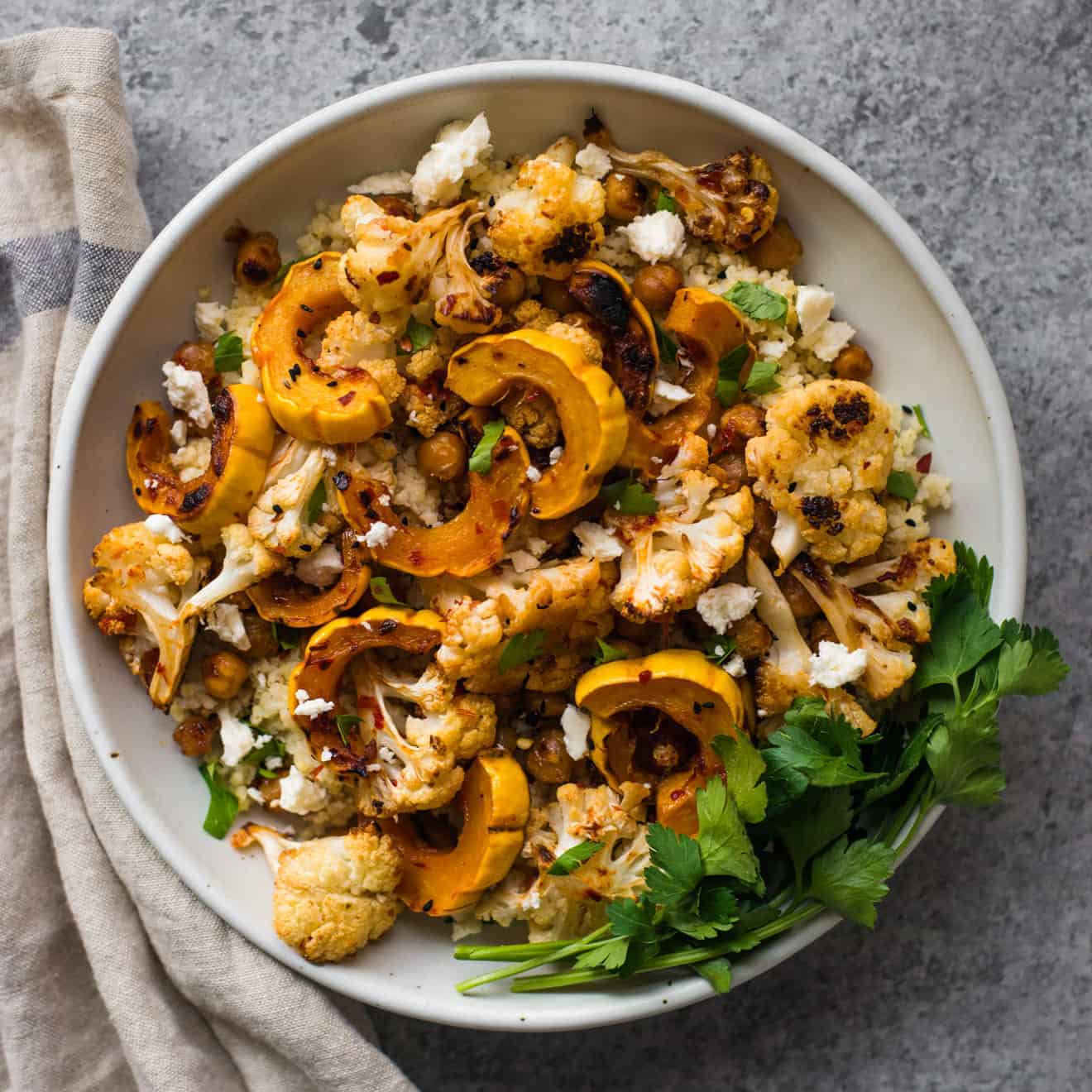
DELICATE PUMPKIN
The Delicata squash is perhaps the most uncomplicated squash of the winter squash family. The skin and flesh of this ribbed tubular squash are usually about 6 to 10 inches long and can be eaten and the seeds roasted separately without the strings. Talk about a zero-waste winter squash! I especially like Delicata squash paired with harissa or red curry paste.
HOW TO CHOOSE AND STORE DELICATA PUMPKIN?
Choose Delicata squash heavily for its size. When selecting Delicata squash, press down to ensure the squash is firm throughout. Store the delicata squash in a cool, dry place for a month or more. Note, however, that the longer you store the squash, the pulp of the squash will gradually dry out.
RECIPES WITH DELICATA SQUASH
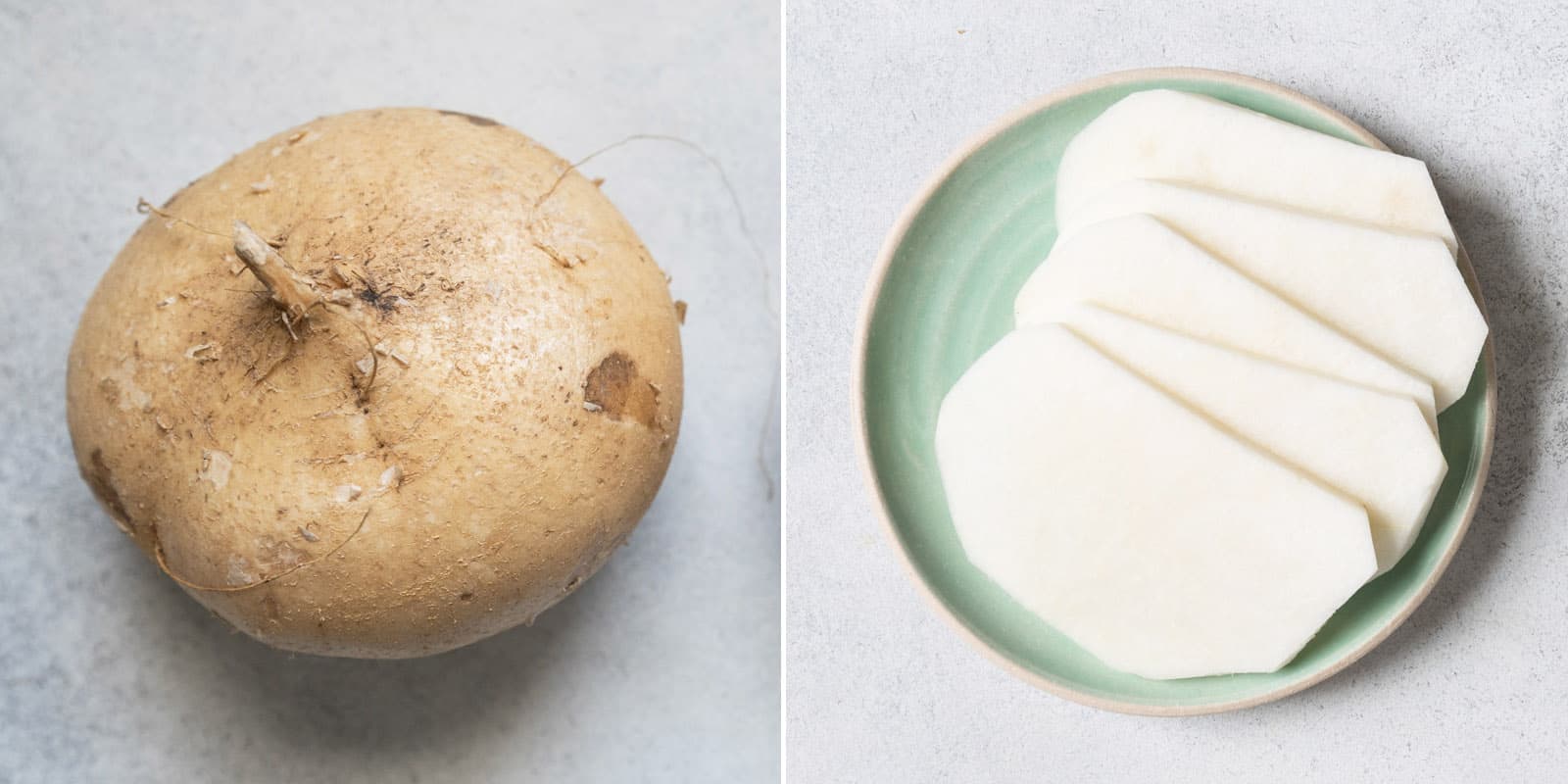
JICAMA
A member of the bean family, jicama is related to chickpeas, green beans, and peas. It resembles a bulbous, light brown potato with a crunchy, creamy exterior. This crispy pulp does not oxidize after peeling.
Jicama are great substitutes for water chestnuts in my spring rolls and shumai with pork and veggies. In fact, I recommend using jicama if you can’t find freshwater chestnuts for savory recipes. Jicama has a similar crunch to water chestnuts, but note that jicama isn’t as sweet and is more watery.
HOW TO CHOOSE AND STORE JICAMA?
Choose Jicama with light brown skin and free from any major dents or blemishes. Watch this video for more tips on choosing Jicama. Note that larger ones (in the 3-4 pound range) tend to be more fibrous. Generally, if you live in an arid climate, you can store jicama at room temperature for a week or two, depending on how fresh the jicama is when purchased.
RECIPES WITH JICAMA

KABOCHA PUMPKIN
Deep sea green kabocha squash looks like a green squash. As with the Delicata squash mentioned above, the skin and pulp are entirely edible. Sliced, it’s great for roasting and even frying (who could resist kabocha squash tempura?)
What is the best way to cut a kabocha squash? Similar to slicing a butternut squash, one option is to snip off the top and bottom stems, then slice through from top to bottom. Scoop out the seeds (which are great roasted) and from there, slice the kabocha squash into chunks.
HOW TO SELECT AND STORE KABOCHA PUMPKIN?
Choose kabocha squash, which is heavy for its size. If stored in a cool, dry place, kabocha squash can last a month or more.
RECIPES WITH KABOCHA SQUASH
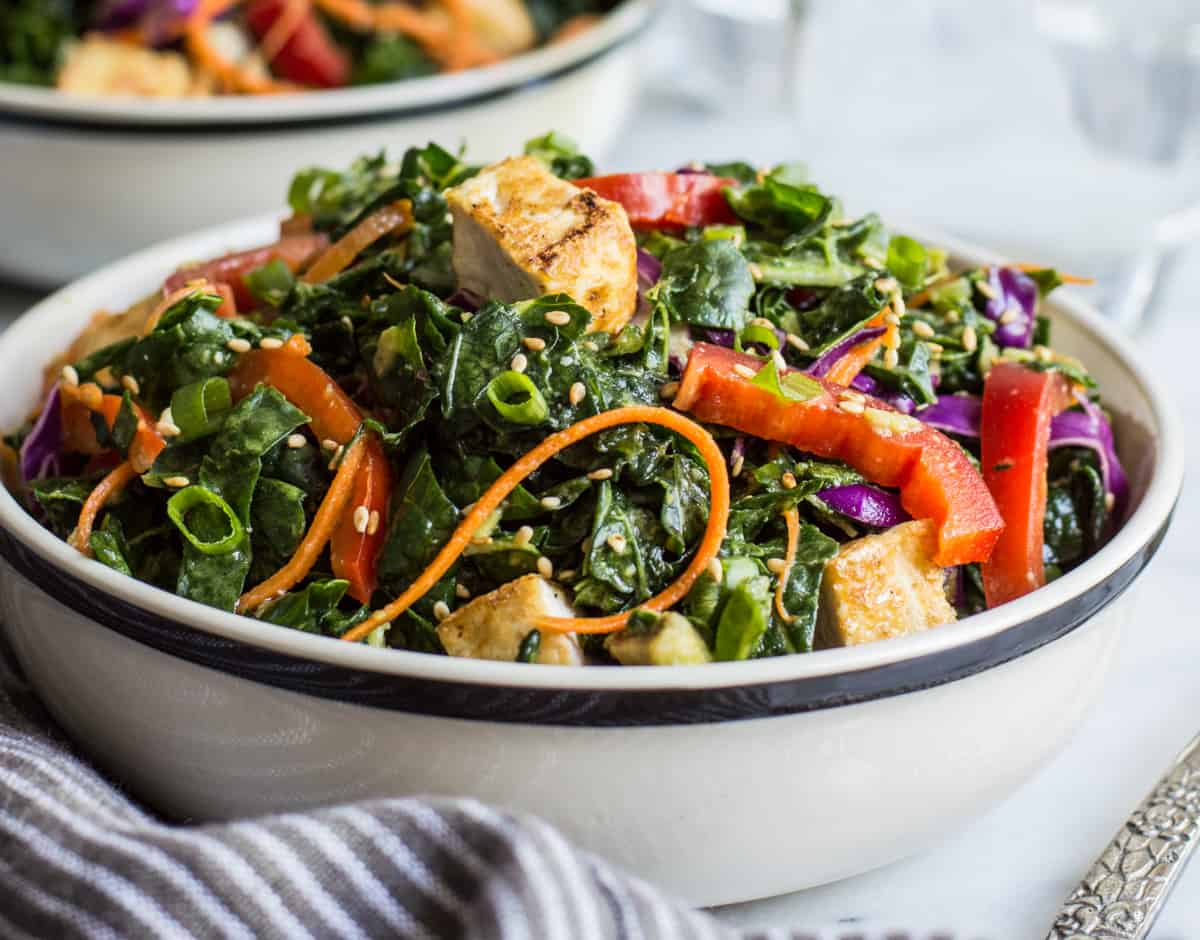
KALE
Whether in a salad, roasted, or even served for brunch, kale is a versatile green. Kale is not only a healthy food trend, but also has many nutrients to offer: vitamins C and E, calcium, iron, protein. Plus, kale is hearty, built to withstand the winter cold and an oven roast.
Kale, Lacinato (Dino), Red Cabbage: Is there a difference between the different types of kale? Bon Appetit has a guide with more details.
HOW TO SELECT AND STORE KALE
Regardless of the variety, choose kale that is crisp and brightly colored. Skip the bunches with spots and discoloration. Store kale in a loose plastic bag in the crisper of the refrigerator for a week.
RECIPES WITH KALE

LEMONS
You can make more than lemonade with these lemons! Grate a conventional Eureka lemon to garnish roasted asparagus or even roasted tempeh. If you’re coming up with less-sour Meyer lemons, bake a loaf of coconut-lemon bread or opt for the classic lemon poppyseed cake.
HOW TO SELECT AND STORE LEMONS
Choose lemons that feel heavy for their size but will yield to a little pressure. Store lemons in a plastic bag in the refrigerator. Lemons can be kept this way for up to a month.
RECIPES WITH LEMONS
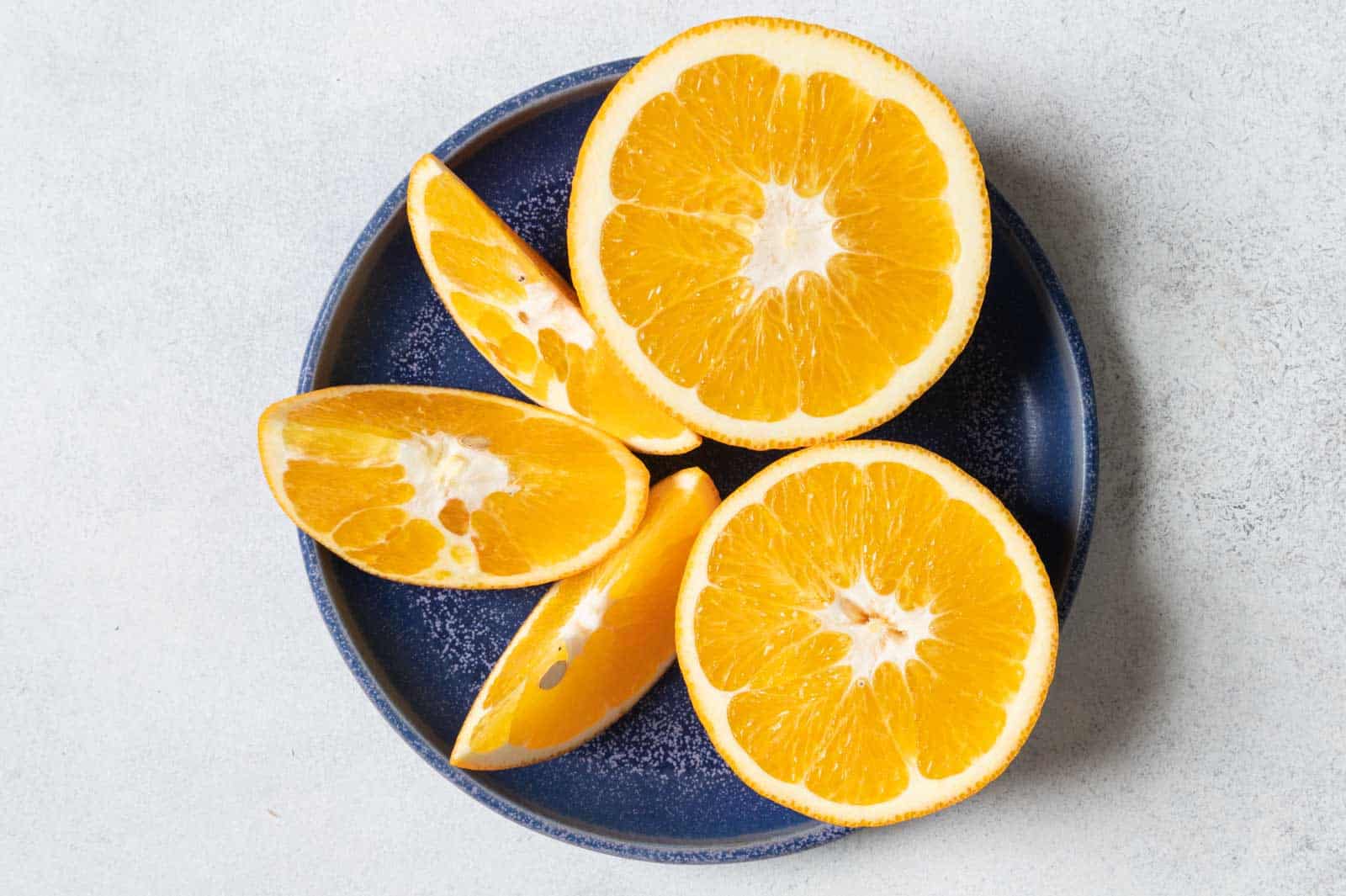
ORANGES
With colder weather often comes cold and flu season, but oranges are packed with vitamin C, which you need to help boost your immune system. The most common variety you will see is the navel orange, but there are also ruby red blood oranges and warm orange cara caras. For a great on-the-go addition, there are palm-sized tangerines and tangerines that are easy to peel.
Oranges are easily eaten out of hand, but both their peel and segments add character to salads and baked goods. And don’t forget a glass of freshly squeezed orange juice!
HOW ORANGES ARE SELECTED AND STORED
In California, I start seeing oranges at the farmer’s market in November, but they’re at their peak in flavor from mid-December to early February. Choose oranges that are rich orange in color and free from blemishes. Larger ones can mostly be stored at room temperature for up to a week. Occasionally an orange may start to rot (rot usually starts at the bottom of the orange). Just throw the orange away if that happens. Peelable tangerines can also be kept at room temperature for about a week. Their skin will start to dry out the longer you leave them outside, but they’re still good to eat. If you plan to eat the oranges for more than a week, store them in the refrigerator.
RECIPES WITH ORANGES
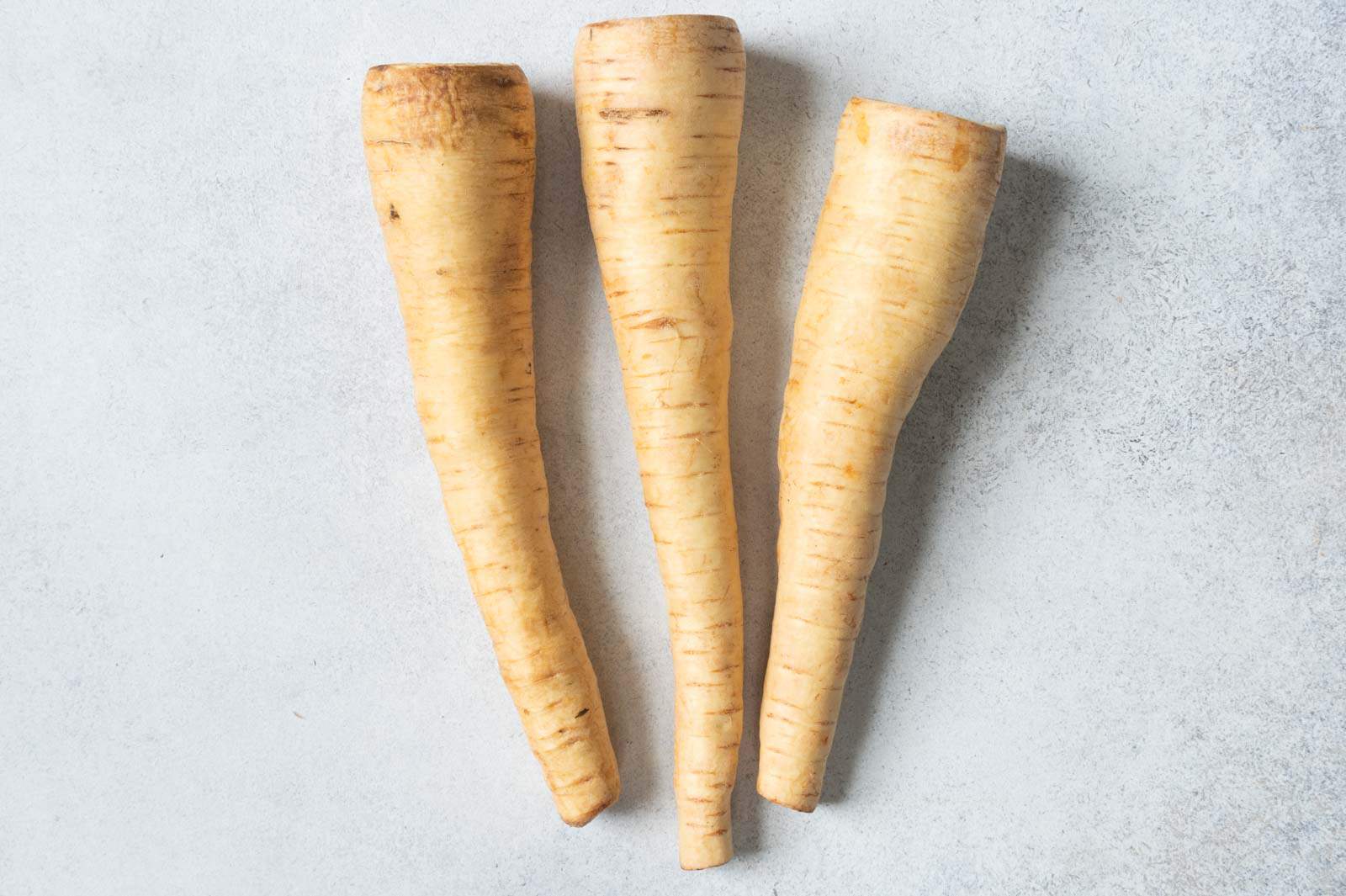
PARSNIP
Parsnips are sweeter than the carrots they resemble. Oven roasting is a parsnip’s best friend and really intensifies that sweetness. Parsnips would be at home in anything you would find a carrot – in soup or just roasted, even baked into a pie (no matter how weird a parsnip pie might sound!) Parsnips are packed with vitamin C, calcium and folic acid.
HOW TO SELECT AND STORE PARSNIP
Choose parsnips that look sturdy and aren’t too dark tawny. Parsnips can be stored in the refrigerator for several weeks.
RECIPES WITH PARSNIP
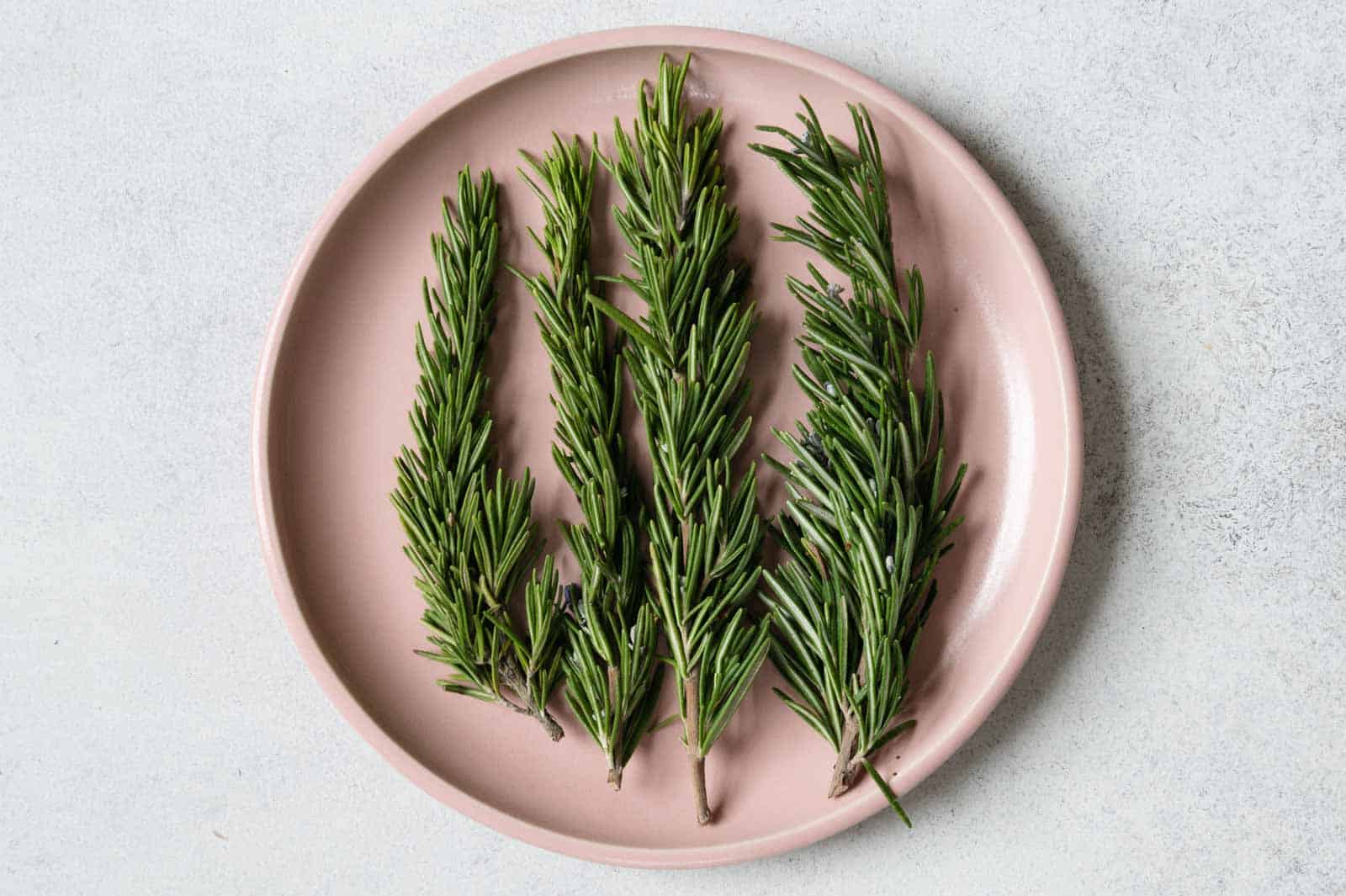
ROSEMARY
Hardy rosemary pairs well with cold-weather favorites like baked potatoes or chicken. Rosemary gives off a pine scent, no wonder, since its branches resemble mini pine branches. As with thyme, it’s best to remove the fragrant needles by running your thumb and forefinger from the top of the stem all the way down. Although you probably won’t eat rosemary on its own, it’s a great source of vitamins A and C, iron, and other minerals.
HOW TO SELECT AND STORE ROSEMARY?
Choose rosemary bouquets that are green with no discoloration. Put the ends of the rosemary in a glass of water and steep as needed.

